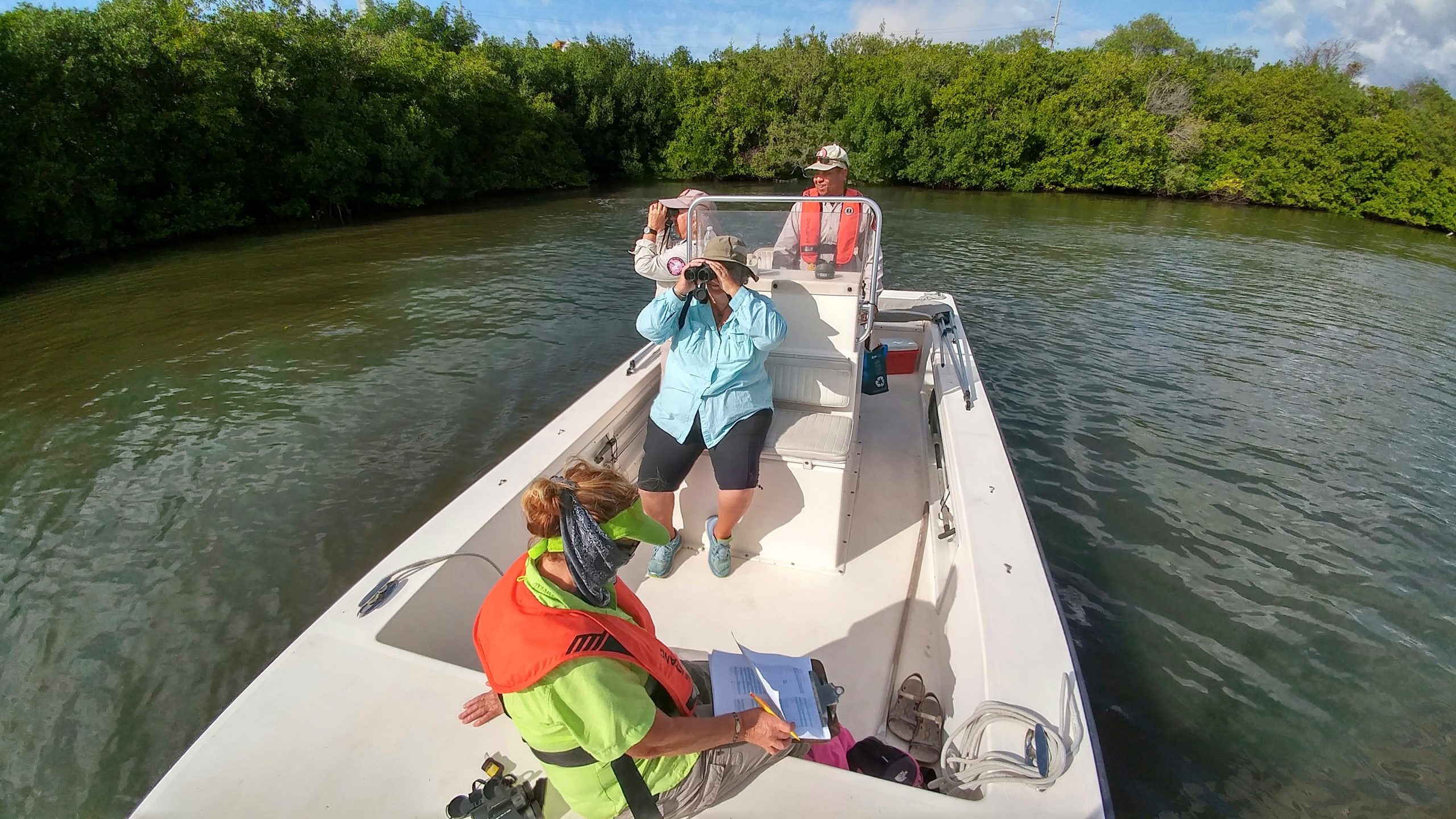Hundreds of bird aficionados will spread out across the region Dec. 14-Jan. 5 to inventory avian populations, information that will be used by the National Audubon Society and researchers to assess their health.
Birders choose from circles with a 15-mile radius and spend all day counting as many individual birds as they can find.
“If you think about high school geometry on that, 15 miles is pretty far but once you turn it into a circle, it is over 170 square miles,” said Charlie Fisher, who compiles the count for the Alafia Banks area, which includes Apollo Beach, Riverview, Fishhawk and Gibsonton.
About 55 volunteers participate in the Alafia Banks count, which this year takes place Dec. 19.
“You may be going into a wooded area you know has a few species of owls or you may be visiting a marsh with a tape player playing the sounds of rails to get them to call back to you,” Fisher said. Many birders get in place before the sun rises, in hopes of spotting or hearing nocturnal birds, such as the owls and rails. “That is when they are active.”
The Audubon Society is actively recruiting volunteers for this year’s count. Its site includes a map with circles still needing volunteers and those that are full. Compilers and their contact information are included on the site, as well, so the public can sign up directly with their local leader.
There is also a link to sign up for North American Birds, so participants can see the results of the count and get other Audubon science program news. And there is a CBC Live Tracker to view photos from others participating in the count and a place to upload photos.
This is the 122nd year for the annual Christmas count. Here is how it began: Prior to the turn of the 20th Century, hunters had a holiday tradition of choosing sites for the Christmas “Side Hunt,” then going into the field to kill as many birds as they could. The team with the biggest pile of dead birds won.
“Conservation was in its beginning stages in that era, and many observers and scientists were becoming concerned about declining bird populations,” the Audubon site states. “Beginning on Christmas Day 1900, ornithologist Frank M. Chapman, an early officer in the then-nascent Audubon Society, proposed a new holiday tradition—a ‘Christmas Bird Census’ that would count birds during the holidays rather than hunt them.”
Chapman and 27 dedicated birders conducted 5 Christmas Bird Counts in one day, ranging from Toronto, Ontario to Pacific Grove, California. Most counts took place near population centers. The count resulted in a tally of 90 species.
Since that time, Audubon researchers, wildlife agencies, conservation biologists and others across North America use the census information, combined with other surveys, including the Breeding Bird Survey, to create a picture of how bird populations have changed over time and space.
In the Alafia Banks circle in Hillsborough County, the count always includes a large population of fish crows who take advantage of Tampa Bay and the manmade islands there. “We get large numbers flying out in the morning and back in the evening,” Fisher said.
“Of course, we’ve always to a got of terrific winter shorebirds and the Alafia Banks count has shoreline along the bay,” he said. “Every year, we get a long-billed curlew, a fabulous and rare shorebird and we always are hopeful we’ll get a whimbrel, along with the regulars, like ruddy turnstones and long-billed dowitchers.”
Someone with less experience, who is joining the count for the first time, is more likely to see a “lifer” during the count, which means it is their first time seeing a particular species, something birders typically track. “If they have never before spent 10 ½ hours in one day beating around places in the winter, they have a pretty decent chance of getting a lifer.”
Even for seasoned birders, Fisher said, “with so many out and so many eyeballs, you turn up some interesting rarities.”
For Ann Paul, president of Audubon Tampa, the annual count is necessary for science and just a lot of fun.
“The general group is always trying to reach a standard number of birds,” Paul said. “If we hit 150 species that is a double-A with a lot of pluses. You did really well. But there are a lot of variables, including the winter weather. Are there small craft advisories? We’ve done bird counts in the rain, in extreme cold, in the brisk wind, and in warm weather. Every time you do it is a different adventure.”
It is fun to join the same group annually for the count and to meet new birders joining in, she said.
Join the count through the National Audubon Society or to join in the Alafia Banks count, contact Fisher directly.




























